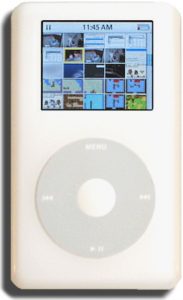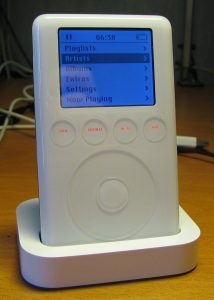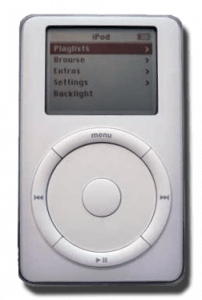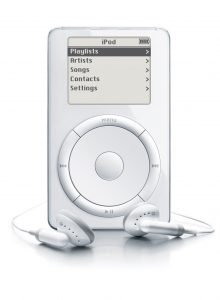The iPhone gets an update annually.
But, the iPod touch has not had this same updating.
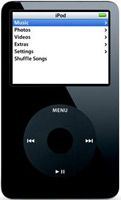
Image Copyright Apple Inc.
Date of release: October 2005
Date of discontinuation: September 2007
It has been the same for the past few years when the 5th generation was released. This was a major step for the iPod Touch.
Every other model has been similar to the precursor. The iPhone shares similar features with it and while the 5th generation does have similarities it is distinctive. This is mostly due to the introduction of colored cases. In the past, it had only come with a black or white case. The 5th generation iPod was thinner and weight less than the iPhone. In fact, the unit was .85 ounces lighter than the iPhone and measured .06 inches thinner.
It expands on the iPod photo by allowing users to play videos on the color, 2.5 inch screen. It was originally available in two colors and had a click wheel with a flat shape rather than the rounded shape found on earlier iPods.
Initially, the models were capable of holding 30, 60 and 80 GB of content. The 60 GB was replaced by the 80 GB model in 2005. A special edition iPod was released when it launched. This was the 30-GB U2 model. At this point in time, they were sold at iTunes for use with iPod videos.
Specifications:
30 GB held 7,500 songs
60 GB held 15,000 songs
80 GB held 20,000 songs
Supported music formats were:
MP3
AAC
WAV
AIFF
Devices also played Audible recorded books.
Supported photo formats included:
JPEGs
BMPs
GIFs
TIFFs
PSDs
PNGs
Video supported was H.264 and MPEG-4
Screen Dimensions:
2.5 inches
320 x 240 pixels
Unit Dimensions:
30 GB – 4.1 x 2.4 x 0.43 inches
60 and 80 GB – 4.1 x 2.4 x 0.55 inches
Connector:
Dock Connector
Battery Life:
30 GB -14 hours
60 GB and 80 GB – 20 hours
Weight
30 GB -4.8 ounces
60 and 80 GB models – 5.5 ounces
Original Price
$299 – 30 GB Model
$349 – U2 30 GB Special Edition
$399 – 60 GB Model
$349 = 2006’s 80 GB Model
iPod Video Requirements
Mac: Mac OS X 10.3.9 plus – iTunes
Windows: 2000 or XP – iTunes
